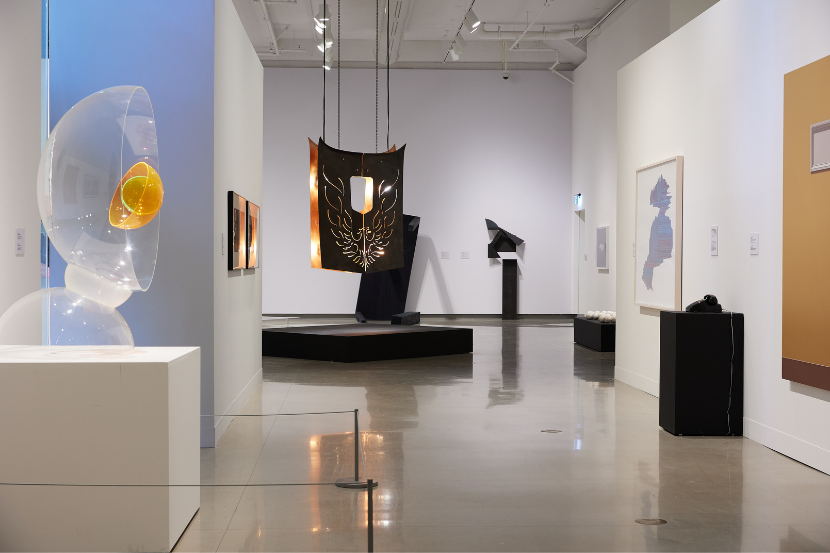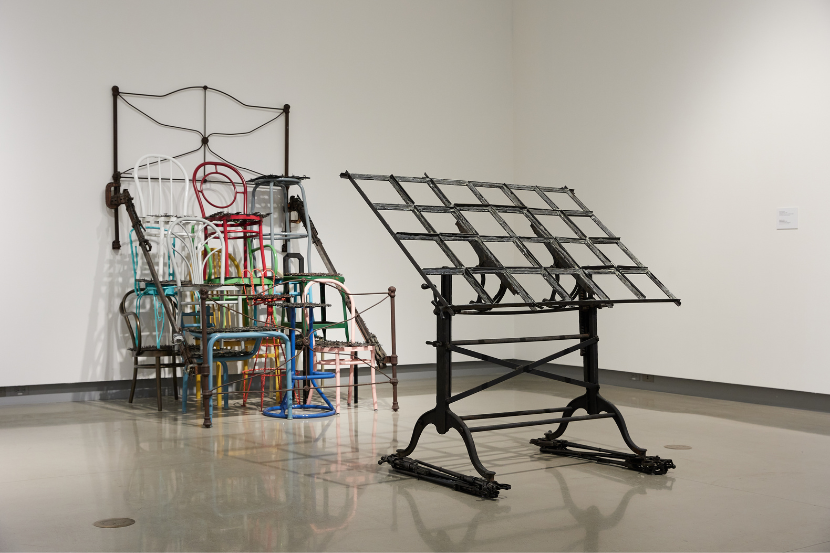From 100 Laurier to the Ottawa Art Gallery
Cousineau-Levine’s inspiration for the exhibition was her deep connection to the department. “Having taught in the department for so many years, I felt I was in a unique position to highlight the accomplishments and many remarkable artists associated with it,” she says.
The exhibition reflects the vitality of the department, and the outstanding, influential work produced by its professors and students over five decades. It also pays tribute to Suzanne Rivard Le Moyne, an artist, educator and creator of the Canada Council’s Art Bank collection, who joined the University in 1974 and brought together a formidable team of artists and art historians to become the department’s founding faculty.
This exhibition has been akin to bringing the department and its people out of the historic university building at 100 Laurier East. “I hope the public will become more aware of this hidden gem within the city,” Cousineau-Levine says.
Art School Confidential is accompanied by a bilingual online catalogue. It includes images of the exhibition, details about the participating artists and didactic panels depicting the art school experience, such as “The Studio Critique” and “Art History and Theories of Art.” The catalogue also features an insightful essay by art historian and filmmaker Olivier Asselin, reflecting on his experiences in the department and theories related to visual arts teaching. Discover the Art School Confidential catalogue.

Integrating diversity, technological innovation, theory and practice
The Department of Visual Arts at the University of Ottawa stands out among art schools in Canada for its unique bilingual approach and integrated academic and studio environment.
Unlike many programs where the history and theory of art are separate from studio production, the University of Ottawa’s BFA, MFA, and history and theory of art programs are all offered within the Visual Arts Building. This close-knit community fosters a level of artistic and intellectual maturity among students which is rare, particularly at the undergraduate level. Cousineau-Levine notes, “The interactions our department facilitates contribute to an exceptional depth of artistic understanding and creativity.”
Students also benefit from proximity to the exhibitions, programs and internship possibilities of the National Gallery of Canada, the Ottawa Art Gallery, the Canada Council Art Bank and other art institutions. These connections enhance their educational experience, with curators from the above bodies regularly attending department studio critiques and thesis juries, engaging with students’ work.
Originally focused on works by white, European and American men, the department now explores art by creators with diverse geographical, racial, ethnic, sexual and gender identities. Students look at and question their own work, and that of their peers and more established artists, not only as esthetic objects but also from theoretical viewpoints ranging from psychoanalysis and feminism to gender, queer and postcolonialism studies.
Looking ahead, Cousineau-Levine sees the department embracing technological advances like AI. “Technological developments will not only generate new and engaging art but also address important societal concerns through the visual works, writing and exhibitions produced by our professors and students,” she says.

Cousineau-Levine: A distinguished career
Penny Cousineau-Levine has had a distinguished career in visual arts, beginning in 1977 when she began teaching in the department. Initially focused on photography, she contributed to the department’s program in this field. In 1989, she joined Concordia University’s Master of Fine Arts program in photography in Montreal. Returning to uOttawa in 2003 as department director, she drew on her experience to establish an interdisciplinary MFA in Visual Arts.
Cousineau-Levine’s research centres on Canadian photography, highlighted by her 2003 book Faking Death: Canadian Art Photography and the Canadian Imagination. This work led to her curating a large, related exhibition in New York City. She continues to write about and curate contemporary art and is currently working on a book about artists’ use of alter egos.


